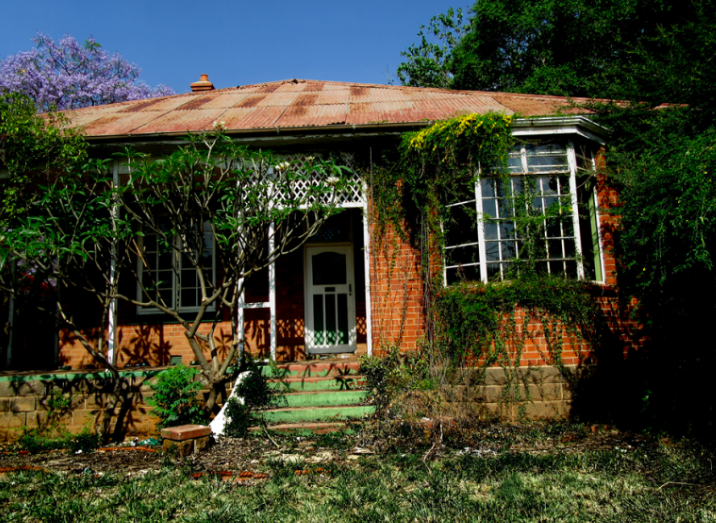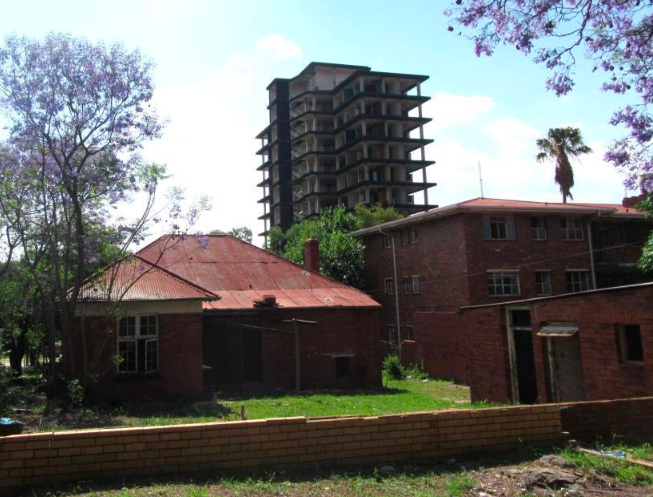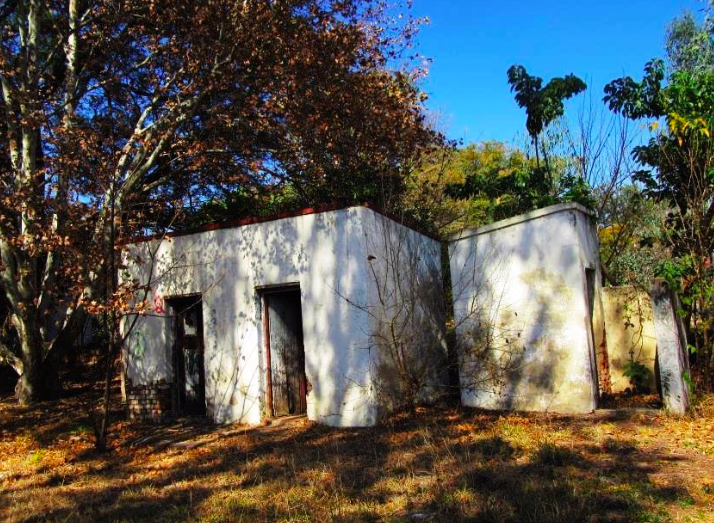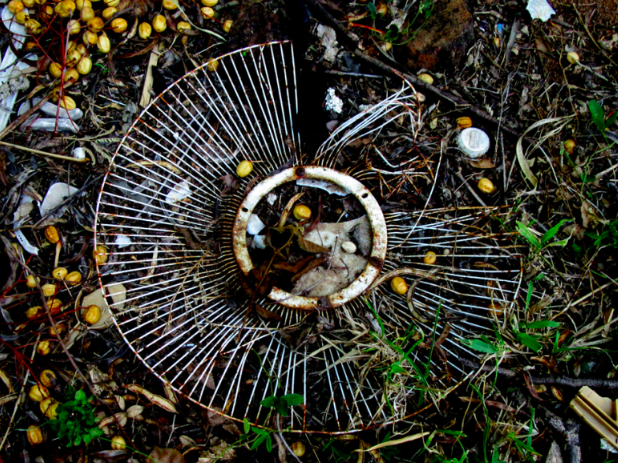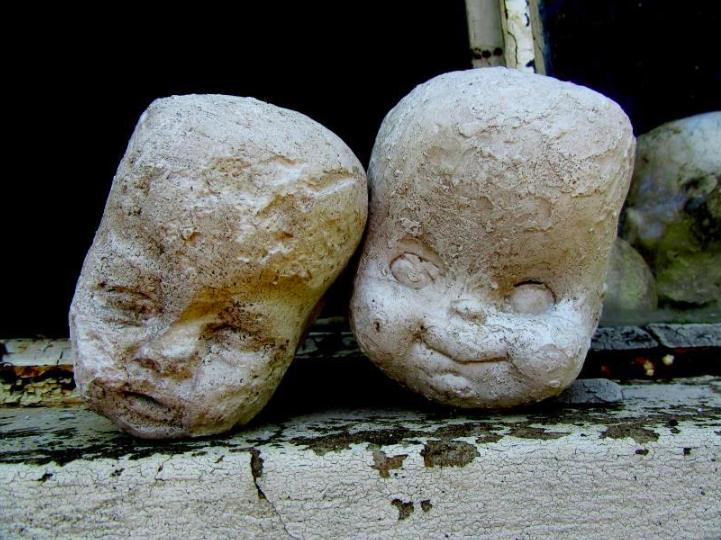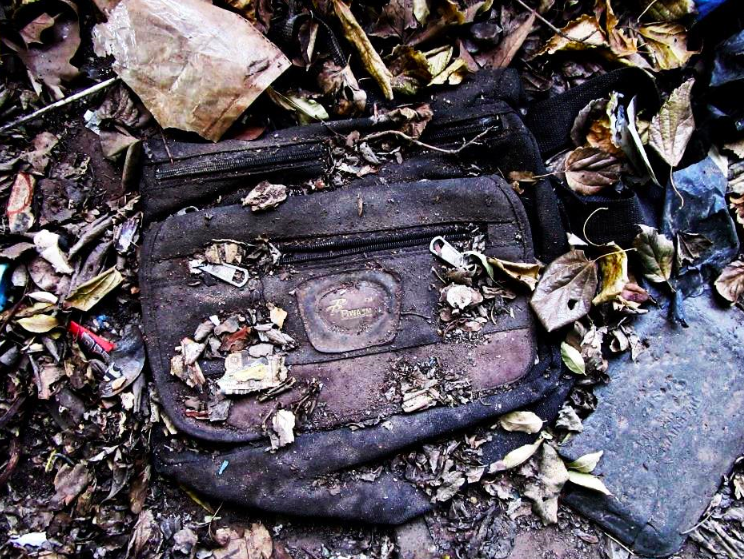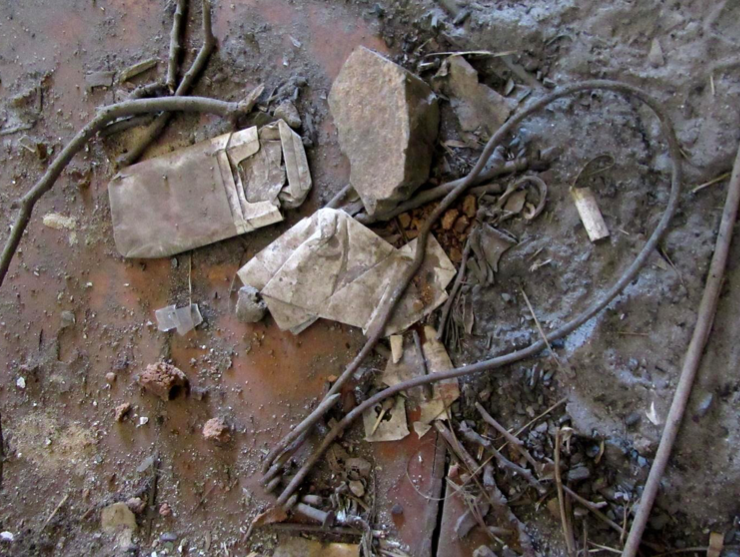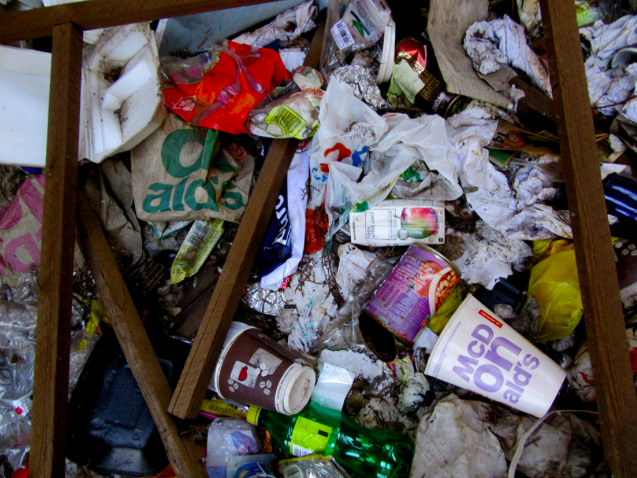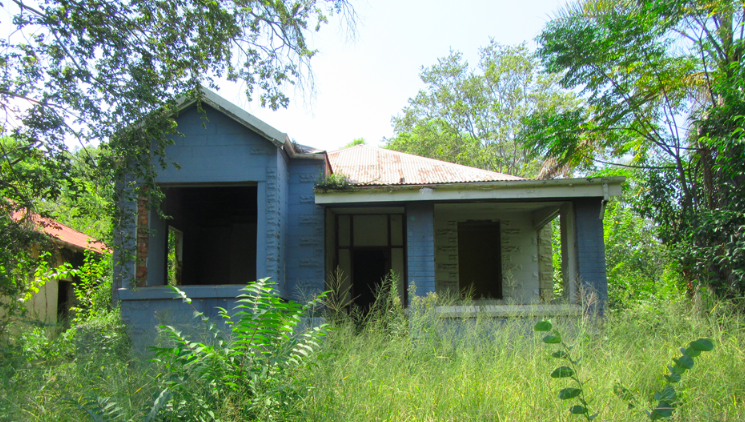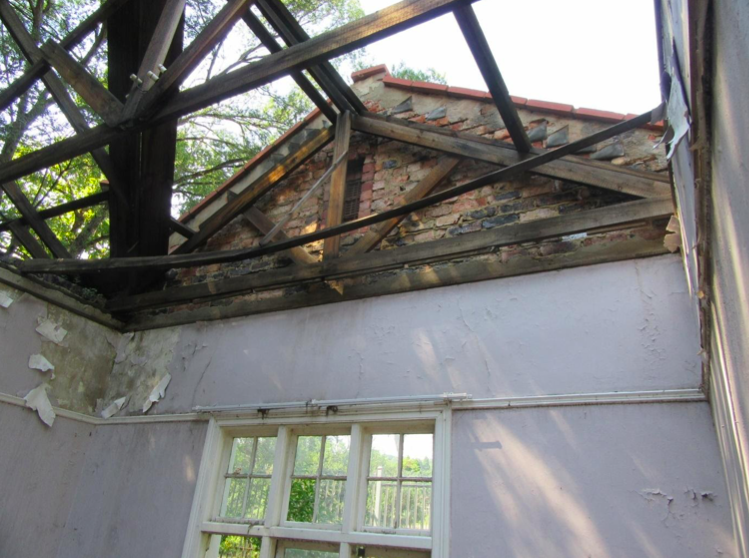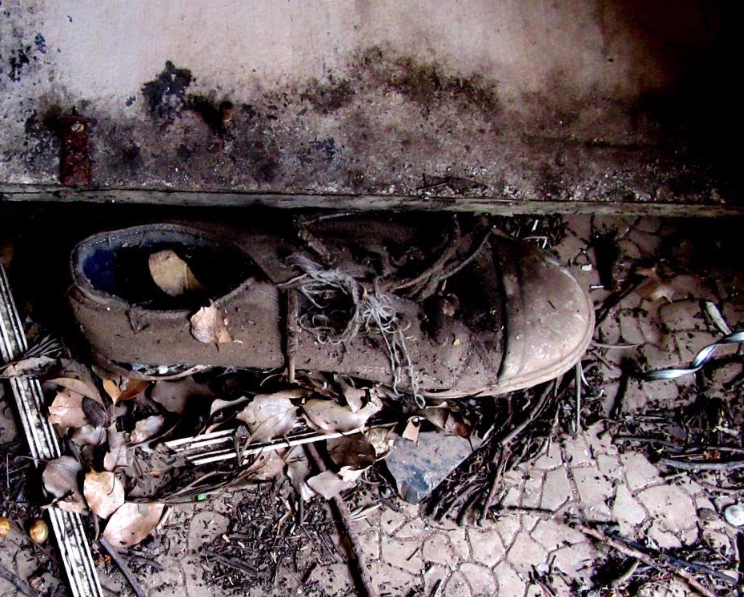
Disclaimer: Any views expressed by individuals and organisations are their own and do not in any way represent the views of The Heritage Portal. If you find any mistakes or historical inaccuracies, please contact the editor.
Over a period of ten years (2010-2020), a set of 20 houses of different styles located on the UNISA (University of South Africa) Sunnyside campus in Pretoria was studied informally for their spectacular deterioration and accumulation of rubbish. Several times each year since 2010, the author (an art student on the campus) visited the houses and took photographs, building up a photographic record of increased dereliction. All in all, the appearance of the houses over the years became very forlorn, yet evocative. It was like seeing Time in action. Also collected was a record of the types of litter and debris inside the houses and in the undergrowth around the houses. How was it possible that the people occupying them had vanished, leaving behind such a rich store of discarded items? Also, from an artistic perspective, many of the ‘trash’ items were beautiful in the way that they had changed.
In 2010, when the author began taking photographs, the Sunnyside campus and its residential houses were in fair condition, meaning that their windows and doors, floors, roof timbers, pressed ceilings and metal roofing were intact, although all metal kitchen sinks, taps, metal pipes and wiring had already been stripped. Where they could not be removed, ceramic fittings like toilets and baths had been vandalised. Nothing of the original occupants remained in the houses.
One of the houses in fair condition
History of the Sunnyside campus
The land and buildings of the Sunnyside campus represent a history of 170 years and are important in understanding the origins and growth of Pretoria (Heritage Assessment). This campus consists of a southern portion and a northern portion, the two being divided by Justice Mohamed Street (formerly Walker Street). In 1992, UNISA (University of South Africa) bought both the southern and northern parcels of land for development. The northern parcel was the original site of the Normaal Kollege, established in 1902 and which became the Pretoria College of Education that operated until the 1980s. When UNISA took over ownership of the entire property, five buildings of the former Pretoria College of Education were redesigned for upmarket conference facilities.
The southern portion of land was part of the suburb of Sunnyside and offered residential housing for college staff, with houses built in the early 20th century. The three blocks of flats on the site were for student accommodation. The architecture of the houses varies from Victorian to Art Deco to a nondescript face brick style. The three small blocks of flats on the site have no real architectural value, but will be renovated for residential purposes. A modern 1960s style 12 storey block of utilitarian single-person flats, Huis Potgieter, apparently a police single-quarters residence, will be demolished. Huis Potgieter was deliberately wrecked many years ago, presumably to prevent illegal occupation. Several tonnes of the reinforced glass side wall panels were smashed out and still lie all around the building. All doors, windows, and ground floor dining hall and kitchen equipment had already been removed by 2010.
Part of the southern side of the UNISA Sunnyside campus 2017, showing the Huis Potgieter block of flats (with all the glass wall panels removed), and on the left hand side, one of the small houses along with its domestic worker quarters, and on the right hand side, one of the small blocks of flats (2017).
Restoring and refurbishing heritage
There are plans for a number of steps and projects to secure, restore and refurbish selected buildings on the southern site, including upgrading of the security infrastructure to minimise the current risk of intrusion onto the campus and prevent damage to the buildings after they are renovated. To give effect to the security risk, in October 2018, a tender was published by UNISA for professional architectural services for the provision of increased security to the site. This was to address the “associated deteriorating extent of UNISA’s external environment” and the need to “protect lives and property” and UNISA’s investment in new developments in both the northern and southern sections of the UNISA Sunnyside campus (UNISA Tender document PT2018/26, 2018).
Nine of the old houses have been identified for demolition according to the Master Plan (2014), along with six ‘outbuildings’. A heritage assessment found that the outbuildings did not contribute to preserving the heritage of the site, their conditions were very poor, they cannot be converted into offices or other modern uses, or the space is needed to create parking areas (Master Plan 2014). Understanding the rationale of these decisions, it seems sad that the outbuildings will disappear without a trace, as they are a sad reminder of the lives of vanished domestic workers. Like the 1853 Point of Pines slave cabin that was rescued and relocated to the Smithsonian Museum, perhaps one of these humble dwellings should be kept as a reminder of a past social order in South Africa.
One of the outbuildings on the Sunnyside campus scheduled for demolition. From left to right, the cold water shower, the small bedroom and a toilet. The room has one window at the back, and is not wide enough or long enough for a normal single bed (2018).
The study of the things people throw away
The archaeology of the past is built on the items thrown away or buried by societies long ago. Following in this tradition, the study of discarded things can offer insights into economic trends, class structure and income, trends in manufacturing, trade and our transnational consumer culture. The study of garbage is now a type of modern archaeology known as ‘discard studies’ or ‘garbology’ and deals with the “study of rubbish and its technical, material and socio-ecological significance”. By examining garbage, “something can be known about the norms, practices, identifies and aspirations of consumers” (Hodes, 2019).
Modern discards form an archive of material culture and can have a significant “afterlife” as we all know. Modern rubbish, which is usually packaging, seems so very abundant. In today’s world, municipal waste collection can often be unreliable and waste will accumulate at sites of human occupation. The litter that accumulates in old buildings or sites of human occupation can also tell a story about the people who lived there, the activities that they carried out, and even the chemicals they may have used within the household (as in DDT or household cleaners). The study of trash in South African can yield a historiography of consumption in South Africa, reflecting increased access to consumer goods, medicines and fast foods through the packaging which is discarded (Hodes, 2019, page 682).
The garbage history of the Sunnyside campus site
All the Sunnyside houses have been visited and occupied by transient occupants over about 28 years (at least 1992 to 2020). Presumably, as UNISA had purchased this land in 1992, the houses were already abandoned for formal residential use from this date. By 2010, the houses would have been abandoned for at least 18 years, and by 2020, for at least 28 years, a long time for dust and trash to accumulate). A legacy of their uncollected waste was discovered in the houses on the UNISA Sunnyside campus in around 2010, and was so abundant and varied, and often so beautiful, that it was irresistible to photograph! Who left it there? Was it changing over the years? What did it all mean? It was also interesting to speculate on the identity of those who had left behind the vast amount of different types of litter.
Some of the items had seemingly been lying in the gardens or in the houses for so long that they had perished, faded, become broken – and it was often quite difficult to identify what the object had actually been. There were also some sad scenes – an old mattress in a garage, surrounded by hundreds of empty tins and pouches of cat food. A destitute person and ardent cat lover, or someone forced to subsist on pet food?
Unknown object
There was also a thick layer of fine grey dust that had settled inside the houses on every surface and this fine grey layer had the appearance of moon dust. In the localities where this dust occurred, it has remained the same for years, undisturbed. On other undisturbed surfaces in the various houses, there was a gritty debris which may be composed of dried human faeces and the remnants of fly pupae, along with plaster material that has fallen from the ceilings and walls of the houses over many years.
Most of the items in the houses could be associated with male occupants, but occasionally some women’s items would be found (a woman’s shoe, women’s toiletries). Many of the ‘finds’ had a horrible forensic quality to them and I often hoped that nothing bad ever happened in the old houses.
An archive of occupation by builders and labourers 2005
In 2005, the new UNISA administration building was completed on the southern parcel of the Sunnyside land. A conference centre was also refurbished, using several of the large heritage buildings. The period of construction and renovation meant that many builders and labourers lived on site and occupied one of the houses during this time. This can be noted by the debris left behind. Inside one of the houses nearest the new administration building were abandoned workmen’s clothing (dozens of rubber work gloves, piles of protective boots, heaps of blankets, old work trousers, underpants, fleece ‘hoodies’ and socks) and men’s hygiene products (plastic shampoo bottles, deodorant bottles) and very many empty alcoholic beverage bottles. When photography started in 2010, the debris would have been in place for around five years, and remained static over ten years of photography, with no apparent additions or removals, forming an archive of male occupation of an abandoned space. This particular building is doomed for demolition, and indeed, it does seem to have passed over a threshold of no return, having also suffered a fire in about 2014.
Occupation by art students
Several of the houses have been used for art projects over the years as the Department of Visual Arts is nearby, and the debris of these art projects still remains. In some of the houses, walls had been painted in bright colours and items used for the projects left behind. Most fascinating was a collection of about 30 plaster casts of dolls’ heads made by an unknown artist, and no doubt used for a photographic assignment in one of the houses. They remained completely untouched for about five years, but in March 2020, they were finally cleared away.
Plaster casts of dolls' heads
An archive of residential occupation by working class men
The houses were used as somewhat more permanent accommodation (judging by abandoned mattresses, cooking pots, food tins, food packaging, men’s hygiene items, shoe polish tins, cigarette packages, clothing and bedding), and noting the remains of fires lit in the old fireplaces of the houses, or even on the wooden floors. In the gardens and undergrowth around the houses there was also a vast archive of discarded hygiene and clothing items. From the quantity of discarded toiletry containers, it seemed that these occupants were probably men working in the Sunnyside area that could not afford to commute home every evening and so lived wherever they could. Whoever they were, they could afford items of food and items for personal hygiene, but seemingly did not want to pay for rent.
An abandoned bag
I was often told to be careful when going into the houses with my camera as there were “vagrants in the houses”, yet during the 10 years of photography, no actual vagrants were ever encountered in the old Sunnyside houses and blocks of flats (admittedly visited during the day). From 2010, the southern campus had been fenced with palisade fencing, with security booms on the Justice Mohamed Street and Willow Road entrances. Perhaps the fence successfully kept people out and this is why there were never ‘fresh’ traces of their presence, for example, still warm fires or fresh chicken bones from a meal that would attest to clandestine occupation during the night. For many of the houses, it seemed that persons had indeed occupied the houses in the past, but had then departed, leaving behind their rubbish (shoes, toiletries, empty food tins and packaging) as their only trace. These objects remained where they were discarded and were not removed for many years and the older items had mostly faded and disintegrated almost beyond identification. The older material became coated with fine grey dust and ash.
Older material covered in dust
An archive of occupation by more affluent visitors
From around 2018, it seemed that a new type of person began to occupy several of the houses, perhaps for leisure and parties, as indicated by fresh packaging for take-away meals, beers and cool drinks. From this time, several of the houses became filled to a depth of about 50 cm with branded disposable food packaging - KFC polystyrene packaging, MacDonald’s chip boxes, Starbucks coffee cups, chip packets, and more anonymous items like aluminium foil platters from catering snacks and other plastic and paper detritus. This debris may have been left behind by UNISA students celebrating. In these houses, there was the sudden appearance of many small Ziploc packages which may have contained narcotics. In the gardens of these houses are now many empty Johnny Walker, Heineken, Corona and Stella Artois bottles.
'Fresh' packaging
Acceleration of vandalism and removal of items
Until late 2018, the 20 or so houses on the southern campus were in reasonable condition, but since then, the stripping of windows, doors and roof sheets has accelerated visibly. Even with security on campus and fencing of the site, these rather large items have been removed. This means that the houses are now open to the elements and will rapidly deteriorate during the rainy season.
Houses are now open to the elements
There cannot be any night or weekend security on the Sunnyside campus, despite the presence of daytime security guards. On some of my earlier visits (in 2012), dogs were kept in kennels on site, and some of the houses contained empty dog food bags and medications for the dogs and presumably the dogs were part of night foot patrols. As at 2010, the most obvious and portable items had been stripped (copper pipes, taps, electrical fittings) and this situation remained steady, until, in late 2018 the more recalcitrant items began to vanish. Taking roof sheeting off a roof would not be something one could do in secret. Hammering doors and windows out of walls would similarly attract attention. A lorry would be needed to remove these items, unless they were quietly portered out during the night.
Admittedly, some of the ruined buildings were already doomed for demolition, but those that are expected to be restored, are now approaching a situation of no return in terms of building damage, for example, two of the old houses to be restored caught fire in February 2020 and burned down.
About the author: Sue Taylor holds a PhD in Plant Biotechnology from the University of KwaZulu-Natal, South Africa, and has worked in the agricultural sector undertaking crop research. She recently spent five years at the University of Pretoria, South Africa, coordinating an African mountain science network funded by the Swiss Agency for Development and Cooperation (SDC). During this time she organized two mountain research conferences, one in Ethiopia and one in Tanzania. Her current interest is in climate change and health, and researching resilient cities and small towns. Sue has been researching the visual aspects of the town and the massacre since 2018, via a MA in Art History at Wits University (in abeyance for now).
Reference
Rebecca Hodes (2019). ‘Pharmatrash’ in South Africa: A Contemporary History of Democracy’s Detritus. South African Historical Journal, 71(4):676 – 703.
Comments will load below. If for any reason none appear click here for some troubleshooting tips. If you would like to post a comment and need instructions click here.

